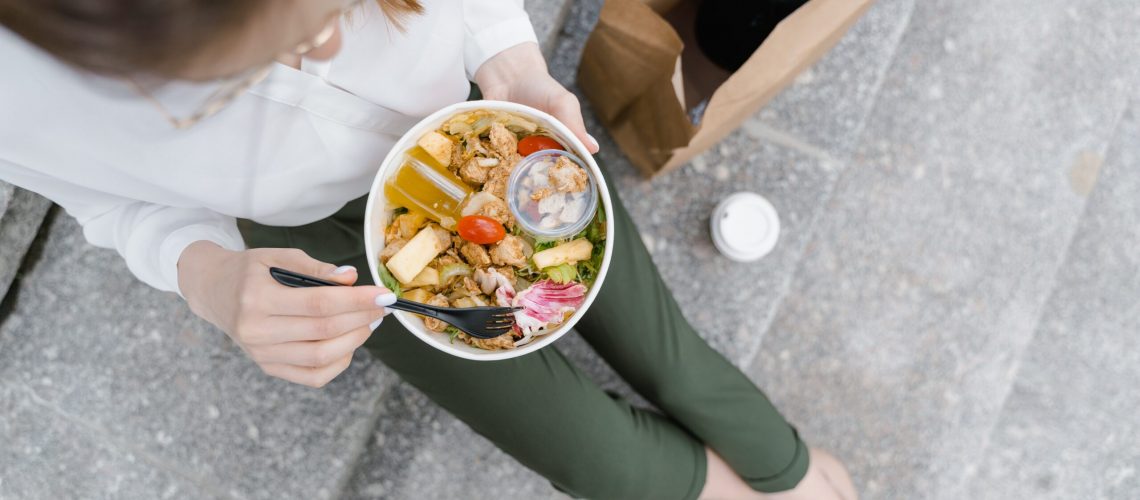Plan meals and make a shopping list
Ever heard that shopping on an empty stomach can affect how much you buy? Well, this is true. Additionally, a person is much more likely to impulse buy when they don’t plan their purchases beforehand. Planning meals for the week and making a shopping list means that you will be much more likely to only buy what you need. Have some easy to ‘go-to’ recipes like overnight oats. After planning your meals, make a note of what you already have in your cupboards so that you don’t waste money by buying more of what you already have.
Freeze foods
You can freeze most foods. High water content foods like tomatoes will likely go soggy but they can still be frozen. Anything that you do freeze should be kept in an airtight container or freezer bag. Freezing foods means that you will have less food waste, as often foods are not used up by their use-by date and they end up being thrown away. Freezing foods means that you can also take advantage of special offers in supermarkets and then freeze what you buy in bulk. Some foods that can be frozen include:
- Breads
- Yoghurt and milk
- Cheese
- Meat
- Fish
- Eggs
- Bananas (frozen bananas make a great sweet snack)
Shop later in the day
Most supermarkets slash prices on fresh items towards the end of the day to avoid excess food waste. There is usually a ‘reduced to clear’ shelf. You may need to find out your local supermarkets typical time for reducing items by visiting them a couple of times first, or just ask a member of their staff.
Buy frozen fruit and vegetables
Frozen fruits and vegetables are usually cheaper than fresh varieties. When vegetables are frozen, they are frozen straight from picking and so the nutrients are sealed in making them highly nutritious. Frozen berries make a great addition to porridge or with Greek yoghurt as a snack.
Buy cheaper brands
The extra cost of more expensive brands is usually due to the labelling and branding. Buying economy brands can be much cheaper and there usually isn’t much, if any difference in quality and taste between products.
Buy alternative meats
Turkey breast is usually cheaper than chicken breast, but they are both a high-quality lean protein source, as well as a good source of vitamins and minerals such as B vitamins, zinc, and iron. Lean turkey mince can also be another option when making dishes like chilli or meatballs.
Buy tinned oily fish
Tinned salmon is usually cheaper than fresh salmon, but both are high in omega 3 fats. Tinned tuna can also be another cheaper source of protein. However, tuna (tinned and fresh) is not classed as an oily fish.
Eat pulses
Pulses are foods like lentils and kidney beans. They tend to be inexpensive and can make up the carbohydrate in some of your meals, as well as providing some plant protein. They are also rich in vitamins, minerals, and fibre. Buy supermarket own brands making them even cheaper.
Look above and below eye level
Supermarkets tend to place their most expensive items at eye level making shoppers more likely to buy these items before cheaper items. Look above and below eye level to make sure you don’t miss any cheaper or reduced-cost items.
Don’t forget about the basics
Basic staple foods like potatoes are healthy and cheap! But these types of foods are often forgotten about; possibly because there can be lots of misconceptions around carbohydrates and secondly because some people typically associate potatoes with a more traditional meal like a Sunday roast. But potatoes can make up a nutritious and inexpensive dinner like jacket potato and beans or mash/wedges with fish.
Budget friendly foods from food groups
| Starchy carbohydrates | Potatoes, oats, rice, pasta |
| Proteins | Eggs, lean mince, tinned fish, canned beans, canned lentils |
| Fruit and vegetables | Frozen berries, frozen greens, frozen sweetcorn, tinned tomatoes, tinned peaches/mango/pineapple in juice |
| Milk, dairy, and alternatives | Home brand Greek/Icelandic yoghurt, milk, cheese (which can all be frozen) |
Ann-Marie is a registered Sport and Exercise Nutritionist. If you would like to learn more about this topic or any other, please get in touch.



